Colour Research Vol.1
Pure coincidence?
When the landscape sets the tone
In Belgium, people love mud - at least as a colour it is popular on the facades of the Benelux country. The Swedes have "their" Swedish red (Falun red) and the Dutch love Oranje (orange)... all pure coincidence?
Colours are closely related to landscape conditions and existing natural materials of every country - and every region. In addition, wind and weather shape the country and its people, including its architecture.
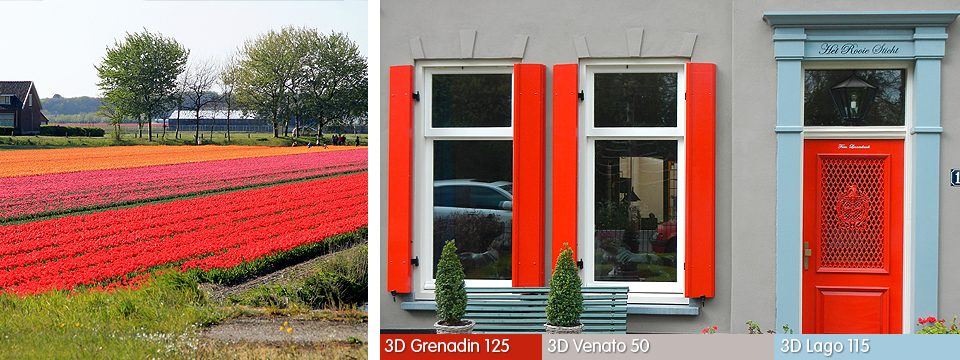
Belgium
The Belgian colouration is characterised by many veiled, greyed nuances. Usually, these are warm shades of grey or greyed browns.
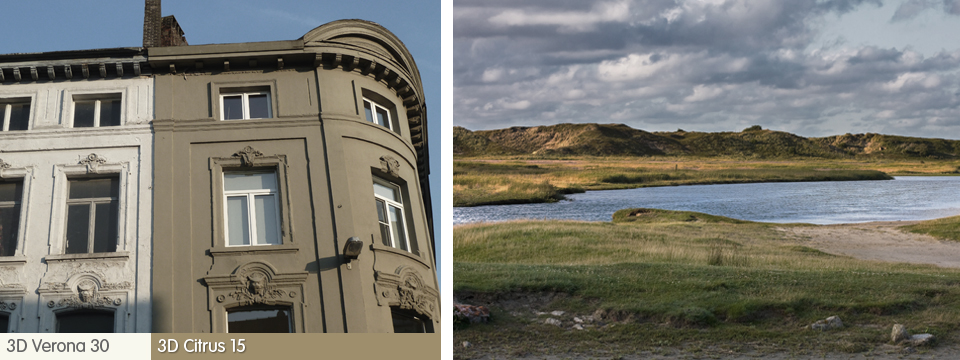
Exciting: The complete colouring of the facade in a single colour, including all associated elements such as doors, window frames, or down pipes. Nuances with a muddy appearance are used for this, inspired by the frequently found loamy soils of the marshland there. Translated into Caparol's 3D system PLUS, this corresponds to the colour families of Palazzo, Curcuma, Ginster, Tundra, and Mai.
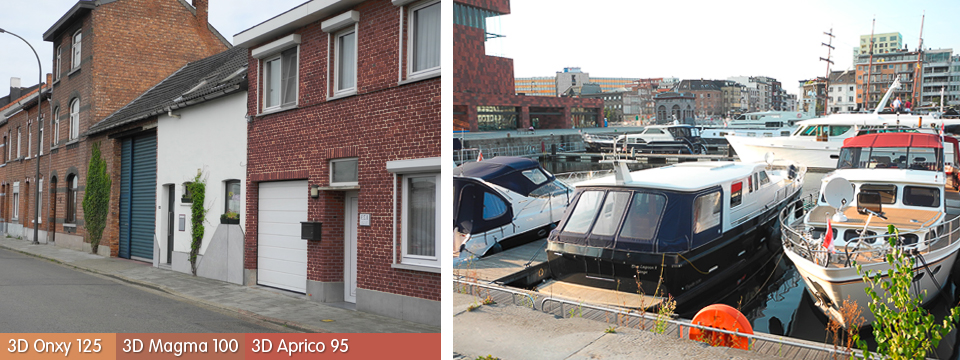
Traditional: In central Belgium's flat hilly countryside, there is fertile loamy soil. It is an important material in Belgium because it is used to produce the important building material brick. Brick architecture developed primarily in areas where there was a lack of natural stone. This is particularly evident in the old cities of Flanders, where brick buildings are still predominant. In Antwerp, the Maritime Museum quotes the old brick tradition with large-format sandstone.
Sweden
Due to its north-south extent of 1,500 km, the country has different climatic zones. This makes the landscape varied, just as the colours of the houses.
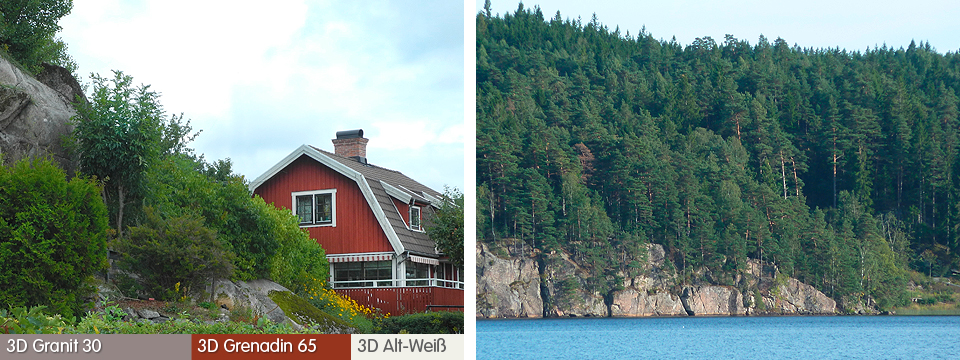
Special: Sweden's western part impresses with rocky cliffs all the way to the archipelago in the direction of Gothenburg. Central Sweden, on the other hand, is characterised by the iron oxide red "falu rödfärg", which makes Sweden's timber houses so unmistakable. As a by-product of the mining of copper, lead, zinc, silver, and gold from the copper mine at Lake Runn, "Falun red" is world-famous today. The plinth of the timber houses are built of archipelago granite.
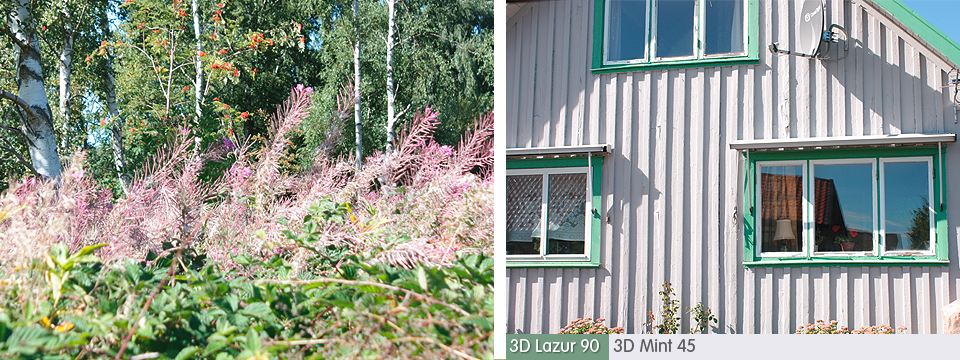
Illuminating: Especially the dark months on the Scandinavian peninsula contribute to the fact that white is the predominant colour in interiors. White nuances are also very popular on the facades of wooden houses, especially on the west coast. Originally, wood was the most commonly used building material in towns and the countryside. That is why the typical timber houses still characterise the Swedish landscape today.
The Netherlands
The colours of the Netherlands are closely related to landscape conditions and natural materials. Brick architecture developed primarily in areas where there was a lack of natural stone.
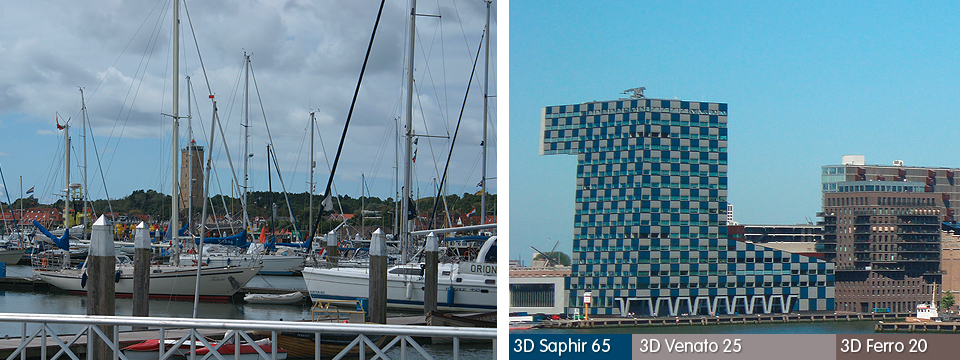
Formative: Hardly any other country is so densely populated. Almost 17 million people live here on an area smaller than Costa Rica. The country is very flat and is mostly situated just above sea level. A quarter of the Netherlands is even located lower than that. Waters close to sea level are protected against the advancing sea by dikes. In this way, even the architecture moves to the water.
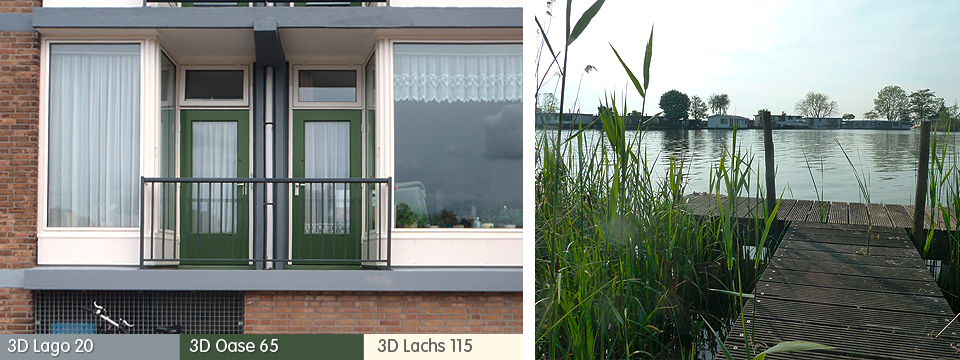
Characterising: Lowlands and waters characterise a large part of the landscape. Moor landscapes and marshlands between land and water provide a unique habitat worthy of protection. In addition, sufficient clay deposits were available for brick production.
France
The colour spectrum of France is very broadly diversified by the different landscapes.
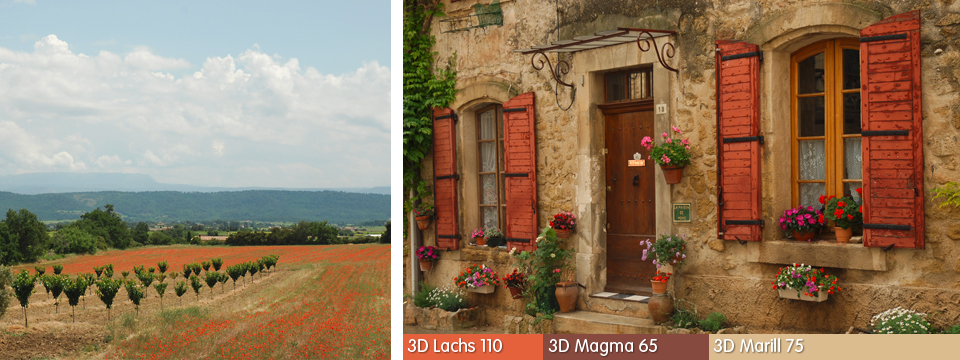
Cultivated: Typical colouring according to the natural environment can be found in the Provence region. The small villages with their houses of lime-sedimentary rock from the nearby quarries are very homogeneous - architecture and landscape merge into a harmonious whole. The light yellowish limestones are contrasted by the colour of varnished or glazed wooden doors and shutters typical of the rural region.
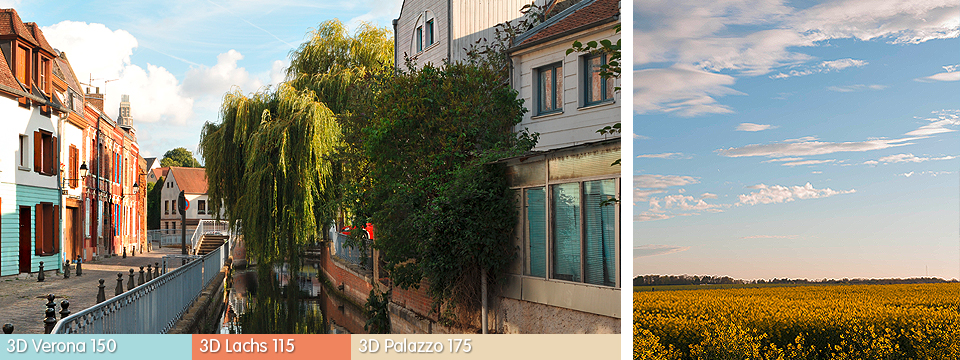
Historical: Amiens with the historic quarter of St. Leu, built in the Middle Ages, is an important cultural heritage due to its distinctive architecture. The district consists of small, narrow houses along the canals alongside the river Somme. The overall picture is often characterised by colourful mixed pastel shades of the wooden cladding, windows, doors, and shutters.
If you want to try out the colours from Sweden, Belgium, the Netherlands or France, have a look at Spectrum_express and try out the colourfulness! You can find the shades in our 3D System Plus.




